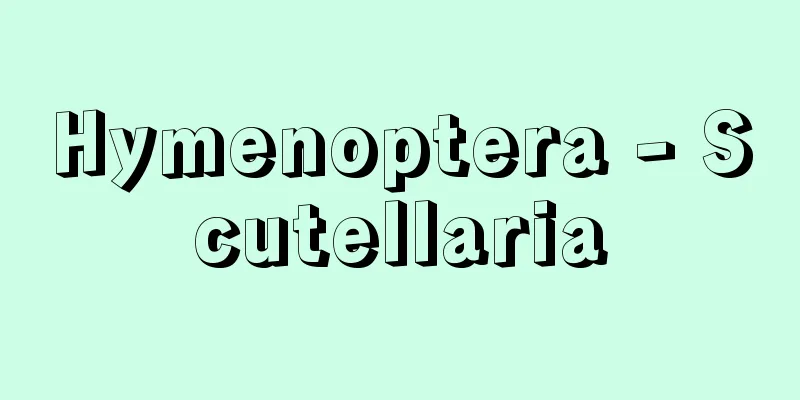Masanori Fukushima

|
A military commander in the Azuchi-Momoyama period. Born in the fourth year of the Eiroku era in Futatsudera Village, Kaito County, Owari Province (Ama City, Aichi Prefecture). His childhood name was Ichimatsu. His father was Masanobu (Ichibei) and his mother was from the Kinoshita clan, an aunt of Toyotomi Hideyoshi. It is said that his family business was making barrels. He served Hideyoshi from an early age. In 1578 (Tensho 6), he participated in the capture of Miki Castle in Harima Province (Hyogo Prefecture) as one of Hideyoshi's pages, and achieved his first distinguished service. He continued to serve under Hideyoshi and made his name known in battles such as the Battle of Yamazaki, the Battle of Shizugatake (in 1583, he became one of the Seven Spears and a commander with a stipend of 5,000 koku), and the Battle of Komaki and Nagakute. In 1585, he was appointed Saemon-no-jo, Fifth Rank, and thereafter took the name Saemon-no-daibu Masanori. In 1587, he accompanied Hideyoshi on his conquest of Kyushu, and in the same year was given a fief of 110,000 koku in Iyo Province (Ehime Prefecture) and entered Yuzuki Castle (Matsuyama City). He later moved to Kokubu Castle (Kokufu Castle, Imabari City). He later participated in the Odawara Campaign and the Korean Expedition. In 1595 (Bunroku 4), he was transferred to Kiyosu, Owari Province, with a stipend of 240,000 koku. He sided with Tokugawa Ieyasu in the Battle of Sekigahara, and was a feudal lord in both Aki and Bingo Provinces with a stipend of 498,000 koku, and entered Hiroshima Castle. He was subsequently stripped of his title in 1619 (Genwa 5) for repairing Hiroshima Castle without permission, and was given 45,000 koku in Shinano and Echigo Provinces, and was placed under house arrest in Takaino (Takayama Village, Kamitakai County, Nagano Prefecture). The following year, he was forced to give up his 25,000 koku stipend in Echigo upon the death of his son Tadakatsu. The Tokugawa Jikki records that he was unfit to be a feudal lord for his violent and evil deeds, and that there were also rumors of rebellion, so it can be said that the real intention behind his stripping was somewhere in the middle of the matter. Considering his political, economic and cultural policies as the lord of Hiroshima Castle, it can be inferred that Masanori was in fact a capable and outstanding man. He died in Takaino in July of the first year of the Kan'ei era. Because his body was cremated before the arrival of the shogunate inspector, his estates were confiscated and the domain was abolished. His grave is at Kaifuku-in, a sub-temple of Myoshin-ji Temple in Kyoto, his mausoleum at Gansho-in (Karita, Obuse-cho, Kamitakai-gun), and the remains of his residence (a prefectural historic site) are in Takayama village. [Harumi Aono] "History of Hiroshima Prefecture: Early Modern Period 1" (1981, Hiroshima Prefecture) "Portrait of Fukushima Masanori: Praise for Heroism" Partial copy owned by the Historiographical Institute, University of Tokyo © Historiographical Institute, University of Tokyo "> Masanori Fukushima Source: Shogakukan Encyclopedia Nipponica About Encyclopedia Nipponica Information | Legend |
|
安土(あづち)桃山時代の武将。永禄(えいろく)4年尾張(おわり)国海東郡二寺(ふたつでら)村(愛知県あま市)に生まれる。幼名市松。父は正信(市兵衛)、母は豊臣(とよとみ)秀吉の叔母木下氏という。家業は桶(おけ)屋であったともいう。幼少より秀吉に近侍。1578年(天正6)秀吉の小姓衆として播磨(はりま)国(兵庫県)三木(みき)城攻略に従軍、初めて功名をあげた。その後も秀吉の旗下として山崎の合戦、賤ヶ岳(しずがたけ)の合戦(1583年、七本槍(やり)の一人、5000石の物頭(ものがしら)となる)、小牧(こまき)・長久手(ながくて)の合戦などで武名をとどろかす。1585年従(じゅ)五位下左衛門尉(さえもんのじょう)に任ぜられ、以後左衛門大夫正則と名のる。1587年秀吉の九州征服に従い、同年伊予国(愛媛県)において11万石を領し、湯築(ゆづき)城(松山市)に入る。のち国分(こくぶ)城(国府(こくふ)城、今治(いまばり)市)に移る。その後小田原征伐、朝鮮出兵などに従軍。1595年(文禄4)尾張国清須(清洲)(きよす)24万石に転じた。関ヶ原の戦いには徳川家康に味方し戦功をたて、安芸(あき)・備後(びんご)両国49万8000石の大名となり広島城に入る。その後広島城の修築を無断で行ったとして1619年(元和5)改易され、信濃(しなの)・越後(えちご)国内で4万5000石を与えられ、高井野(長野県上高井郡高山村)に蟄居(ちっきょ)した。翌年、子忠勝(ただかつ)の死により越後の2万5000石を返上。『徳川実紀』には資性強暴、悪業を行い大名として失格者、そのうえ反逆のうわさがあると記されているから、そこらに改易の真意があったといえよう。広島城主などとしての政治経済・文化政策からみると、実際の正則は能力のある優れた人物であったことが推察される。寛永(かんえい)元年7月高井野で没した。このとき幕府検使の到着前に遺骸(いがい)を荼毘(だび)に付したため、遺領は収公、廃藩となった。墓は京都妙心寺塔頭(たっちゅう)海福院に、霊廟(れいびょう)は岩松院(がんしょういん)(上高井郡小布施(おぶせ)町雁田(かりた))に、屋敷跡(県史跡)は高山村にある。 [青野春水] 『『広島県史 近世1』(1981・広島県)』 「福島正則画像 雄厳賛」 東京大学史料編纂所所蔵模写(部分)©東京大学史料編纂所"> 福島正則 出典 小学館 日本大百科全書(ニッポニカ)日本大百科全書(ニッポニカ)について 情報 | 凡例 |
>>: Fukushima Basin - Fukushima basin
Recommend
Audio material - Onsei Shiryo
...However, there are societies among humankind t...
Ryokei Watanabe
Year of death: 15th February 1645 (12th March 1645...
Abyssinian [species] (English spelling)
The world's oldest breed of domestic cat (illu...
Yuwaku [Hot spring] - Yuwaku
A hot spring located at the foot of Mt. Io, 16km s...
Nakadori - Nakadori
One of the regional divisions of Fukushima Prefec...
yajé (English spelling) yaje
...However, several plants are known from the Old...
co-feature
...It is also called a programmer in English. In ...
Enschede (English spelling)
The largest city in the province of Overijssel in ...
Bookstore - Honya
A publisher and retailer of books and scrolls. Wh...
S(■1)1 - sn1
...An ionic reaction in which the reactive site o...
scientia experimentalis (English spelling) scientia experimentalis
...Because he advocated a unique natural philosop...
Strike - Uchimaki
〘 noun 〙① A method of offering. Scattering rice. I...
Betti, E. (English spelling) BettiE
...With regard to curves, Jordan's theorem wa...
Douko - Drum
A type of drum used in Chinese drama, mainly in ma...
Colloquial - Kogo
It is the opposite of literary language. It means...
![Saga [town] - Saga](/upload/images/67cba74dd9e85.webp)
![Wiesbachhorn [mountain] - Wiesbachhorn](/upload/images/67cf7de8dda8d.webp)
![Yuto [town] - Yuto](/upload/images/67cd121d1da0e.webp)






